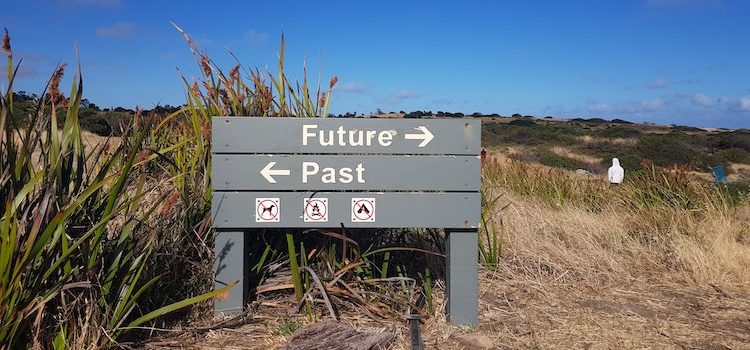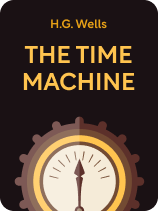

This article is an excerpt from the Shortform book guide to "The Time Machine" by H.G. Wells. Shortform has the world's best summaries and analyses of books you should be reading.
Like this article? Sign up for a free trial here.
How did H.G. Wells explain time and time travel in The Time Machine? Did he get it right, according to real science?
A Victorian scientist builds a machine that can travel through time. The Time Machine, first published in 1895, is one of the earliest known science fiction stories. This literary classic by English author H.G. Wells popularized the concept of time travel and introduced the now-common phrase “time machine.”
Read more to learn how the book explains that time is the fourth dimension.
Time Is the Fourth Dimension
The Time Machine begins with the Time Traveller explaining to a group of his friends (including the narrator) that time travel is possible. This is because time is a dimension just like length, width, and height. So, because time is the fourth dimension, people should be able to move through time just as they can move through the other three dimensions.
To prove this, the Time Traveller says that nothing could be only three-dimensional because an object that exists for zero time doesn’t exist at all. He illustrates the point by comparing it to the fact that no object can truly be two-dimensional—anything that exists must have some height, even if it’s as thin as a sheet of paper. Therefore, all objects actually exist in four dimensions (length, width, height, and time).
(Shortform note: The Time Machine is fiction, but it’s true that physicists consider time to be the fourth dimension, although the reasoning is somewhat different than what Wells wrote. Time must be a dimension because, in order to fully explain where an object or an event is, you also have to specify when it’s at that location. For example, if someone asks you where you are, the time is implied—”Where are you right now?” Without such a timeframe, the question (and the answer) would be meaningless; you could answer with any location you’ve ever been or ever will be. With that said, time is fundamentally different from the other three dimensions, and we can’t interact with it in the same ways.)
The Time Traveller then announces that he’s created a machine that can move freely through the fourth dimension, which he shows to his disbelieving guests. After a short demonstration involving a miniature version of the time machine, the guests go home.
(Shortform note: Are time machines possible? Researchers have designed time machines that, hypothetically, would allow people to move along the fourth dimension as the Time Traveller claims. However, those designs require either negative mass (which doesn’t exist) or negative energy—which exists but without a way to harness it. One such machine is actually possible to build but making it work would require more energy than there is in the entire universe.)
One week later, the guests return to the Time Traveller’s house for a dinner party. The Time Traveller isn’t there, but the guests find a note saying to start eating. The group is in the middle of their meal when the Time Traveller returns; the guests are shocked to see that he’s filthy and limping. After dinner, the Time Traveller tells them what he experienced when he traveled through time.
(Shortform note: We learn that most of The Time Machine is actually a secondhand account of the Time Traveller’s journey—the Time Traveller told a story to his guests, and one of those guests is now telling that story to the reader. This raises the possibility of an unreliable narrator—someone who, intentionally or not, misleads the audience. In this case, for instance, the Time Traveller might have embellished his story or the narrator may have misremembered some details of it. One famous example of an unreliable narrator comes from the movie The Usual Suspects, where a twist ending reveals that most of the events shown in the movie never actually happened; the narrator made it all up on the spot.)

———End of Preview———
Like what you just read? Read the rest of the world's best book summary and analysis of H.G. Wells's "The Time Machine" at Shortform.
Here's what you'll find in our full The Time Machine summary:
- An overview and analysis of H.G. Wells's 1895 science fiction novel
- A look at the science behind the story—what's real and what's fiction
- The literary techniques and symbolism Wells used to craft the story






